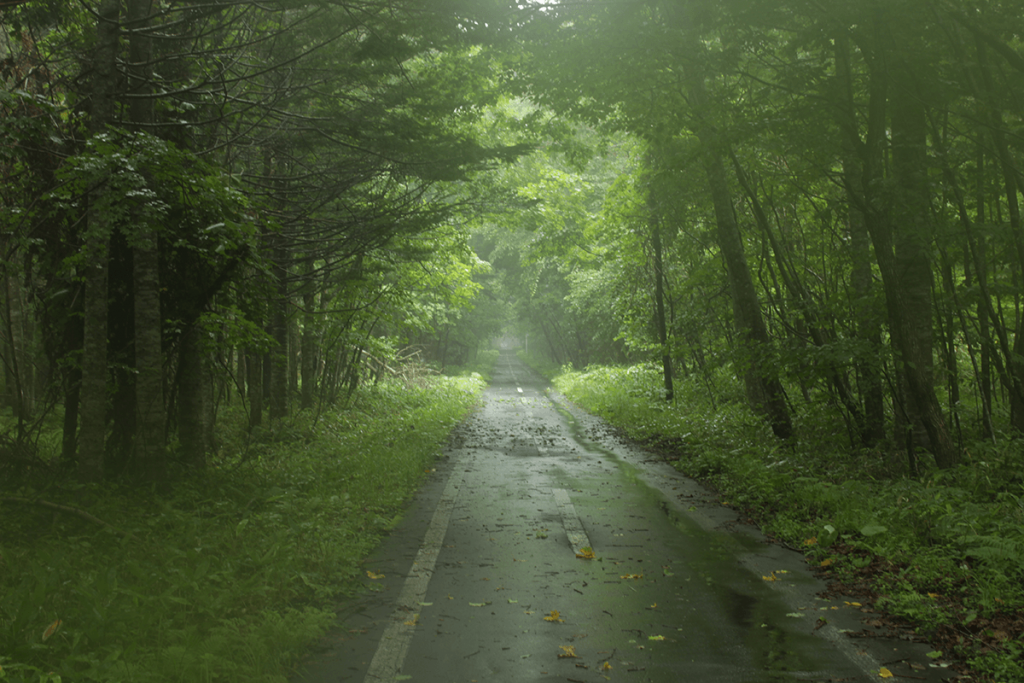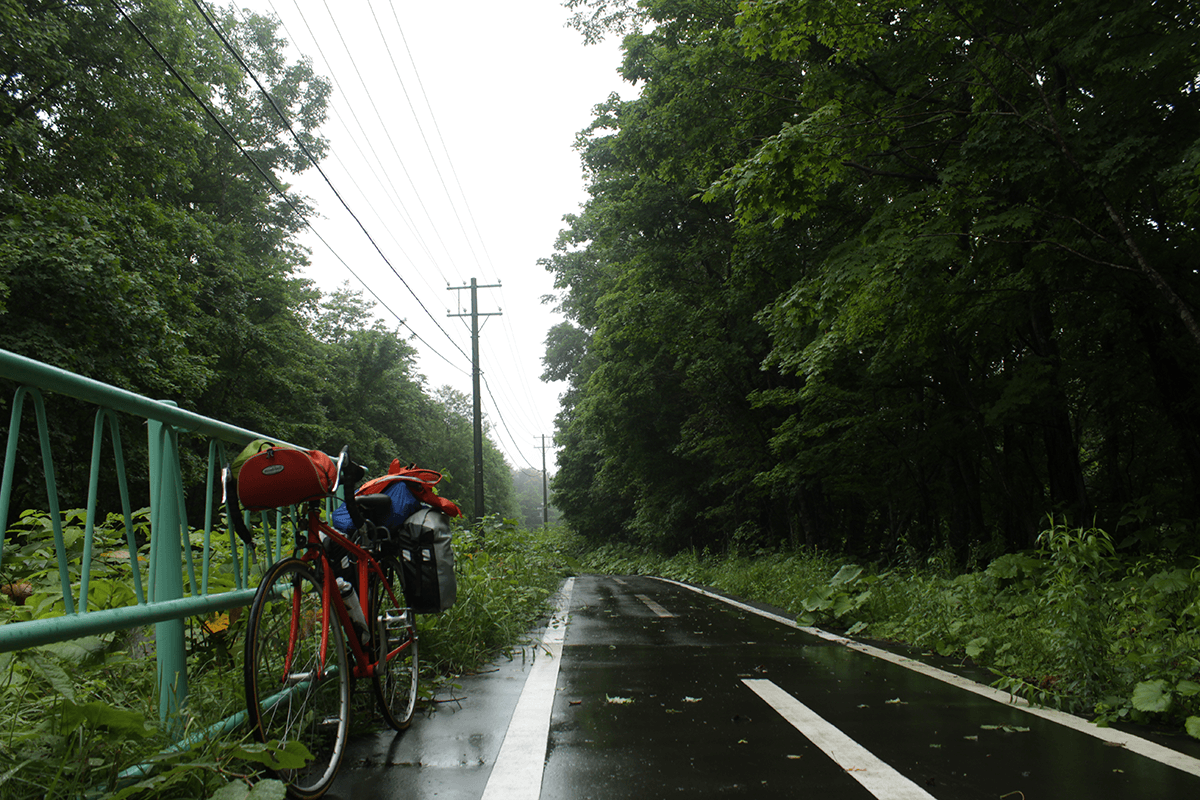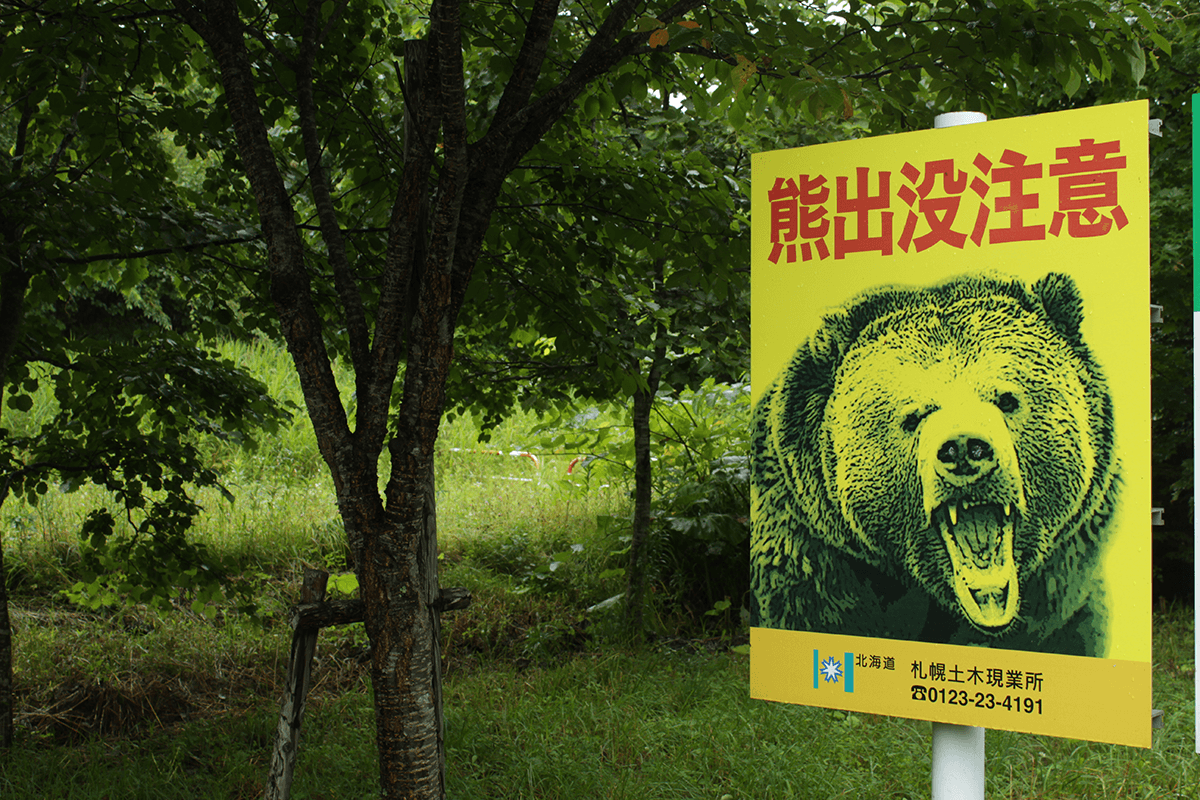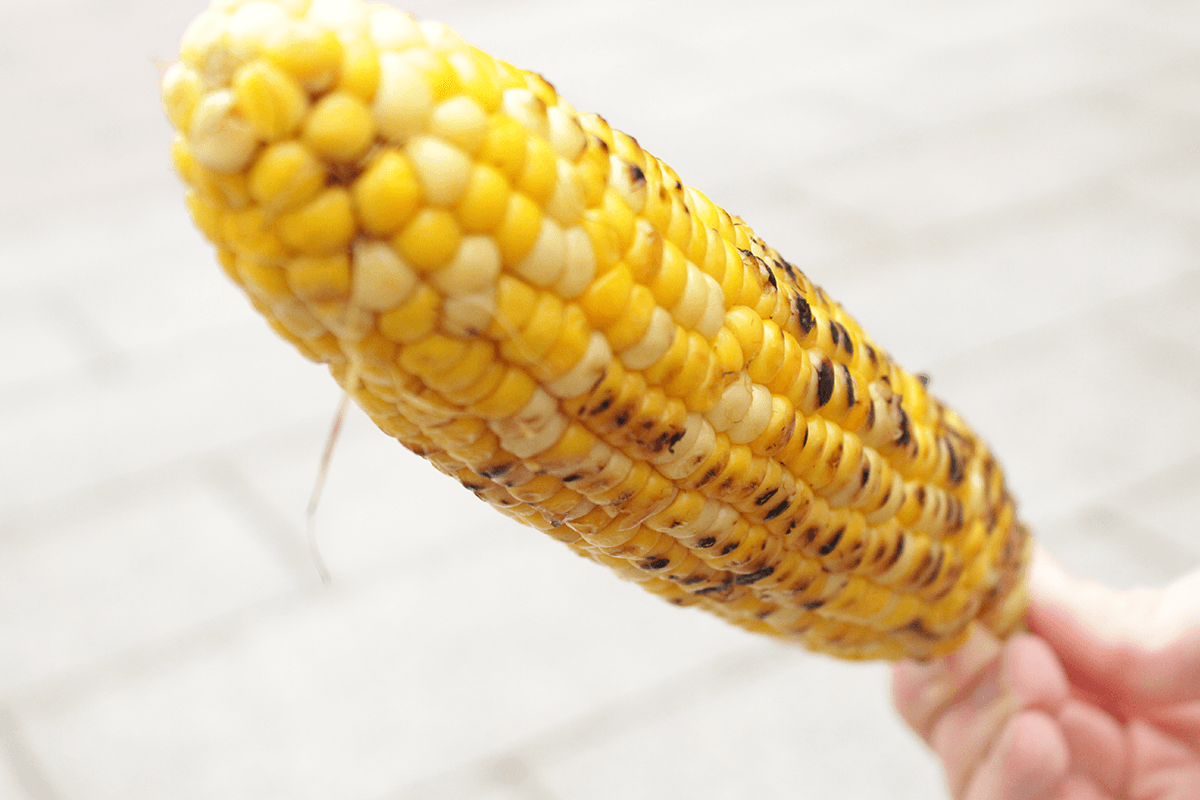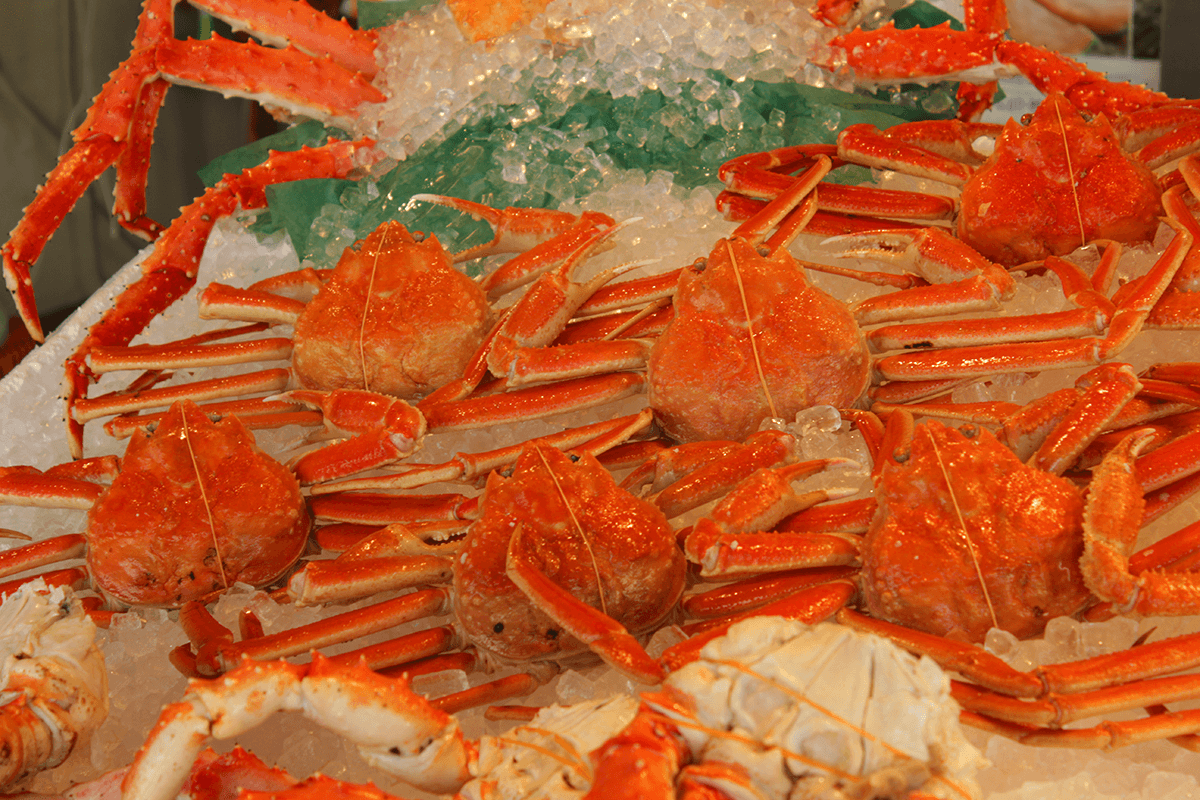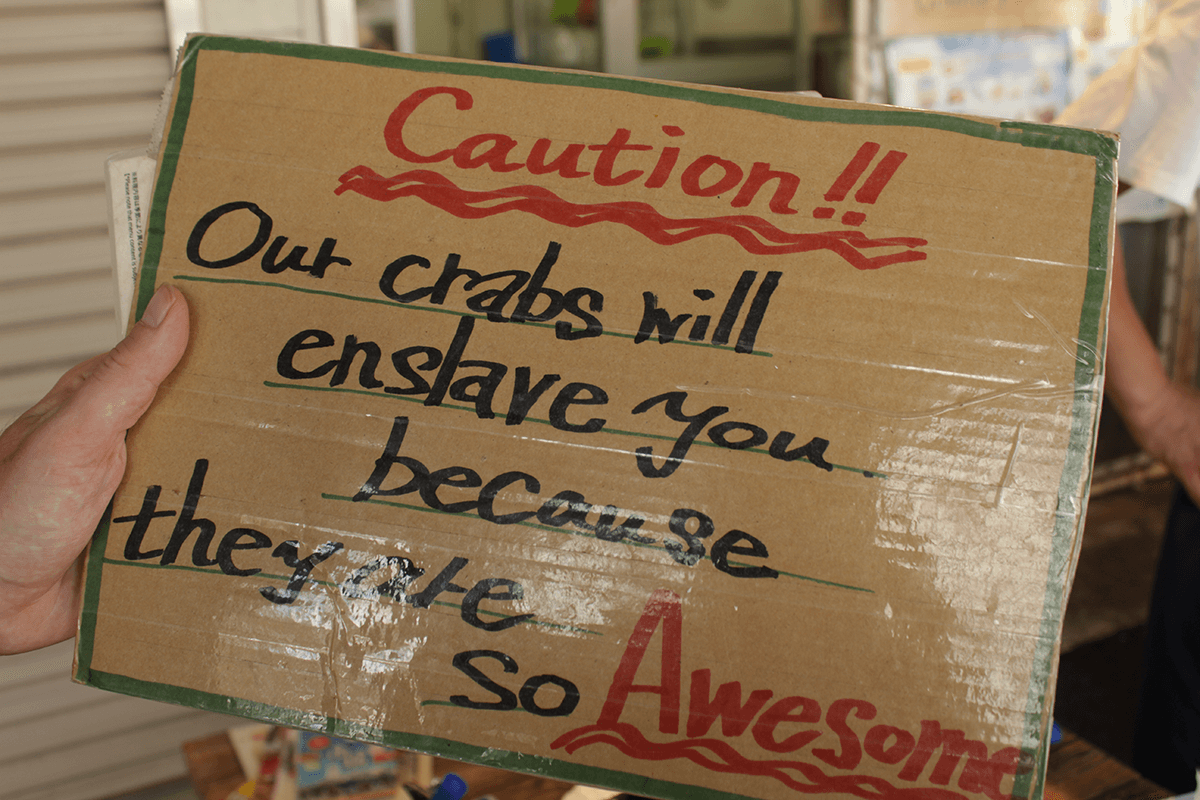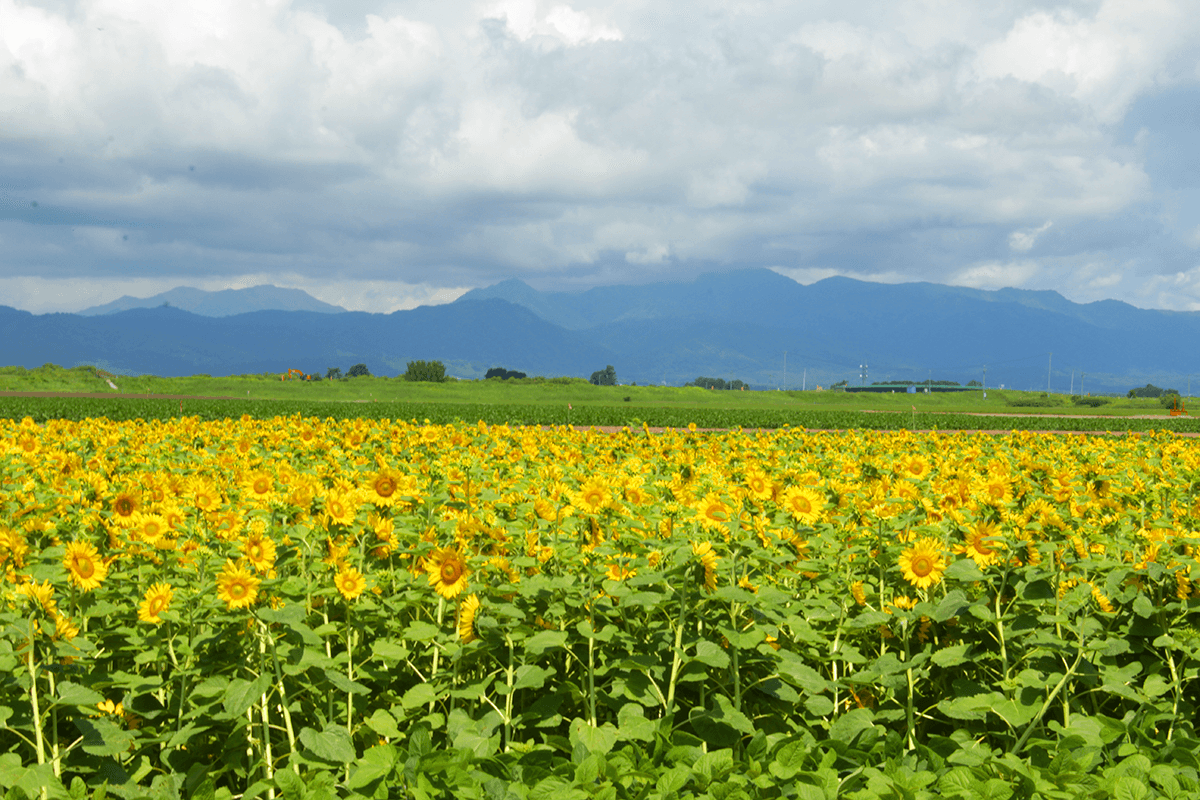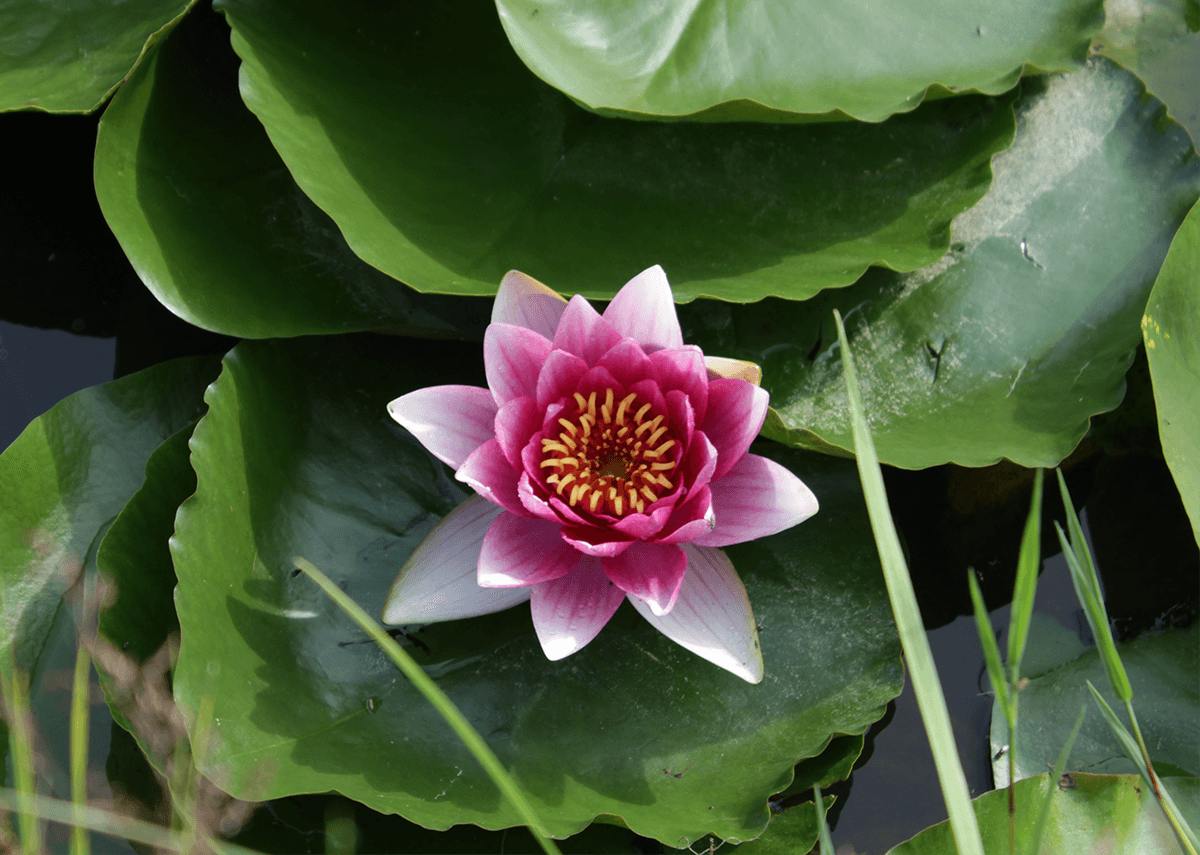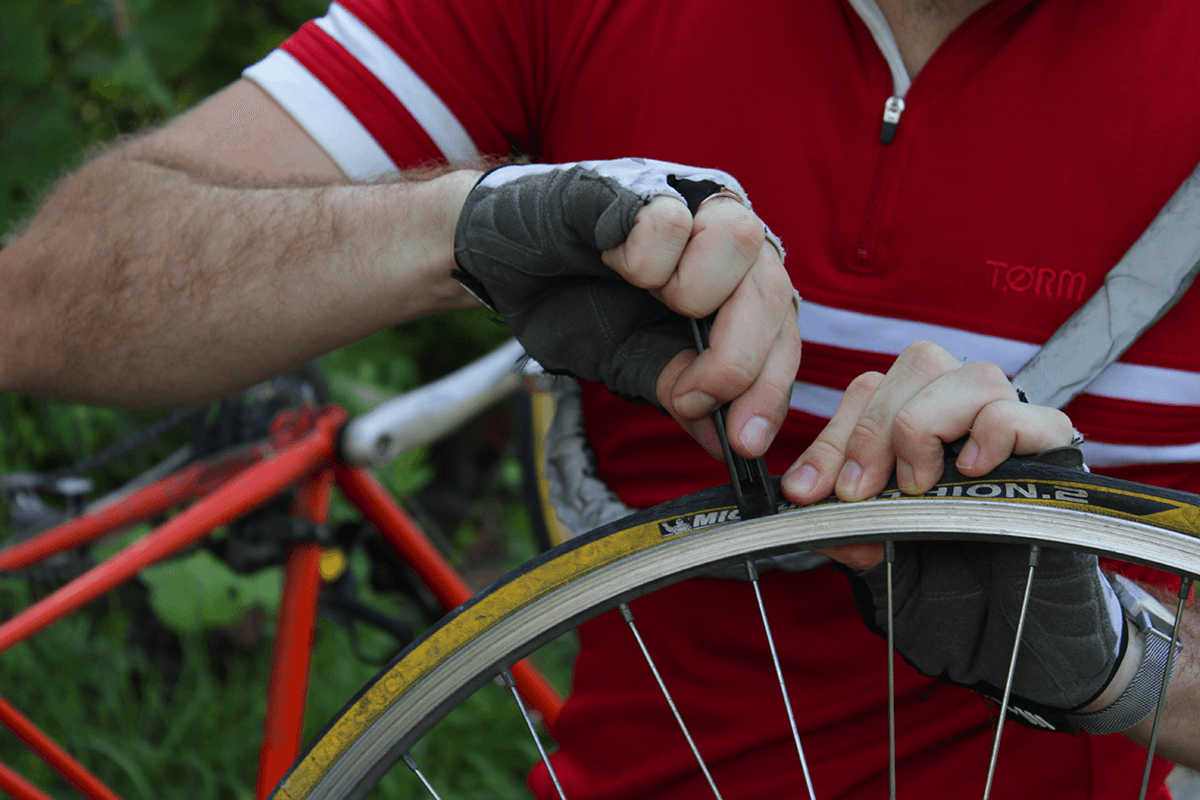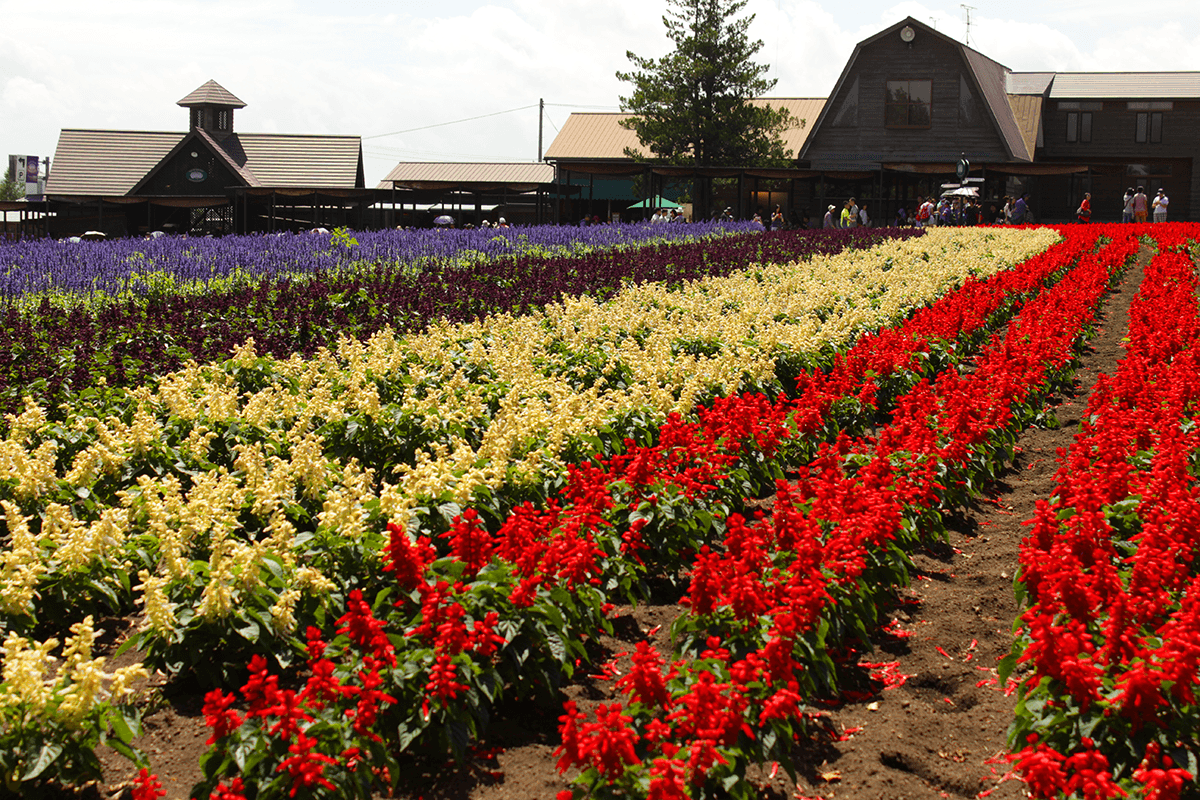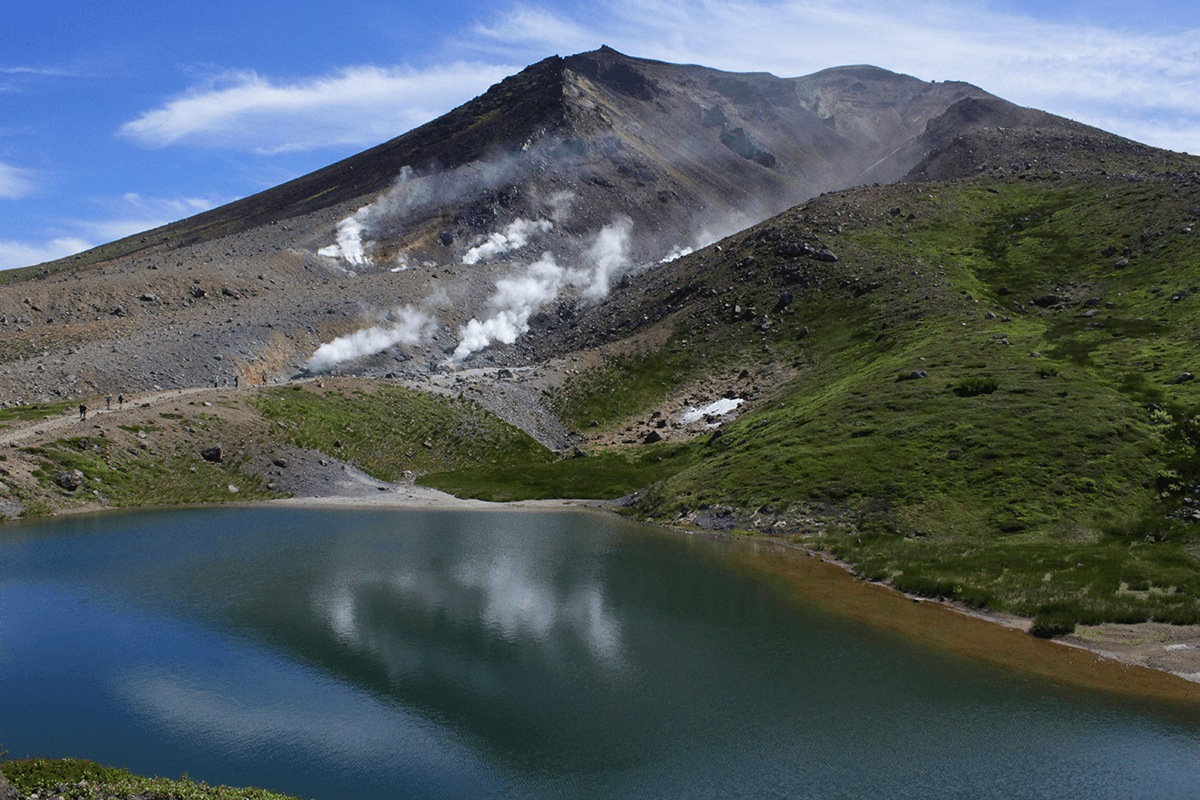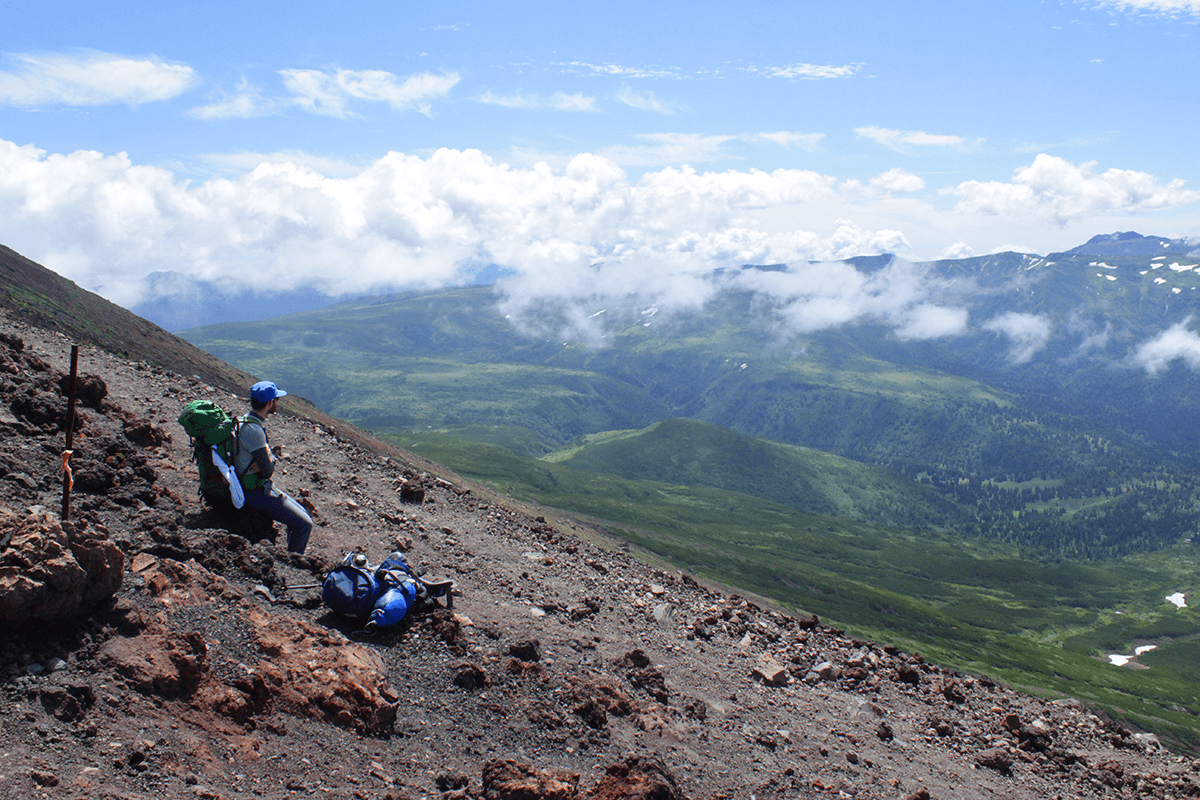Pushing our laden bicycles out of the ferry’s darkened hull we had no idea that we’d have more than an adventure ahead of us. We’d left behind Tokyo in August, claustrophobic with the sweat of the commuter crush, and found the clouded sky of Hokkaido, crisp and cool, with a cold breeze passing about us. After so many months of concrete and trains and schedules, the wide roads of Hokkaido, untamed forests and bear warnings spread out before us like an impossible dream. With our new gear, and a rough route, we set out to explore Hokkaido on our bikes.
Day 2: Shikotsu-ko
This grand and isolated lake, with forests reaching down to the very water’s edge, has an eerie reputation. The kelp that lines the lake bed is long and easy to become tangled in. Over the years many people have fallen foul of it, and drowned in the lake. Now, the mist that rolls down the mountain gullies and across the water’s surface are thought to be the spirits who now haunt the lake. Or so our couch surfer host in Sapporo later told us.
Route: After spending Day 1 in a cheap Chitose campsite close to the ferry terminal in Tomakomai we set out along Route 16, a locally famous cycle path, spanning the 25km distance between Chitose and Lake Shikotsu. Beautiful and wild, it follows a salmon river. Signs with vibrant yellow backgrounds warned of enraged bears, teeth in full view. As we pedaled through a stretch of primordial-looking forest, moss covered and hazed by light rain, it was easy to imagine encountering one. The campsite was flooding, so we pitched under the awning of an unused restaurant. Tying a washing line up between a vending machine and a pillar we stripped, changed and watched the storm pour down as our clothes dripped all around us.
Camp: Morappu Campsite had basic facilities and at ¥600 per person you’re paying for the view.
Days 3-6: Sapporo
Whilst there isn’t much to do past midnight, the city offers a lot during the day, and it served as our food capital of Hokkaido, getting us well versed in the ramen, prefectural dishes, and northern specialities. We ate like carb-starved cyclists and soaked in the laid back atmosphere of Sapporo in the summer heat.
Route: Waking up in Shikotsu-ko brought no rain but the stormy clouds reflected off the mercury lake, as if the sky was still a little hung over from the night before. Exhausted and unwashed, we had a flat 80km stretch along Route 36 through mostly cityscapes.
Sightseeing: Umi, our couchsurfing host, said that Sapporo was trying too hard to be like Tokyo, and that it should just be itself. The city didn’t give us a feel for its atmosphere until we ventured away from Sapporo Station, towards Odori Park, overlooked by Sapporo TV Tower. Children ran into fountains in swimwear and adults idled at the edge. Taking off our shoes, we copied them while eating Hokkaido’s famous white corn, slathered in butter and soy sauce, and taking a turn up the tower afterwards. Other sights not to miss are the Mount Moiwa ropeway for a twinkling view of the city at night, the Moerenuma Sculpture Park for a day outside, and the Ainu Museum at The University of Hokkaido.
Food: Touring our way through the main Hokkaido eats, we started with Jingisukan (Genghis Khan) a curiously named speciality that sears different lamb cuts, eyes, ears, stomach, you name it, at the table on a hotplate shaped like a Mongol helmet, accompanied by beansprouts, onions, and a rich dipping sauce. Hunting for a good soup curry, we took a recommendation from our host and queued out the door of Rojiura Curry Samurai for 45 minutes, the vegetables being the freshest I’d eaten in months. I went for a smoked shrimp and steak curry and drank katsuya, fermented milk with lemon undertones only available in Hokkaido. Our last stop was Nijo Fish Market where we walked around looking at king crabs larger than our torsos and ate sushi and crab that remain some of the softest and richest in flavor I’ve ever eaten. Of course, peppered throughout our stay were many of Hokkaido’s rich ice creams, which are not to be missed.
Days 7-10: Kita-Mura, Takikawa, Takisato-ko
The next three days we cycled through the countryside of Hokkaido, rolling through green grass that towered over our heads, alongside sunflower fields that spread to the bases of mountains, and through pastures speckled with flowers and red roofed barns. Above us, hawks swooped fearlessly and Japanese herons perched, resting by watersides. The insects were huge beyond belief, and the birds and plants seemed to be bursting with life, making the most of one of the shortest summers in Japan.
Kita-Mura
Our first stop was at a free campsite at Kita-Mura Village in Iwamizawa, hidden behind an onsen that served buttery and filling miso ramen. Although the onsite toilets were crammed with bugs, the large pond was filled with pink and white flowering lotus, spanned by a traditional Japanese bridge, and had such a stunning sunrise view that we decided to stay an extra night.
Takikawa
Reluctantly leaving this beautiful campsite we traveled on to the much less beautiful Auto-Camp Tsurunuma Park in Takikawa. Whilst it had a lot of amenities, including washer and driers for a fee, the campsite felt like an abandoned summer camp, with empty cabins and desolate stages. At ¥600 per person it was on the pricey side for Hokkaido, but the staff were very friendly and gave us free detergent.
Takisato-ko
The next day we hit the road in blistering heat at 7am and labored our way to the most remote campsite yet: a lakeside campsite nestled between mountains that required some climbing. Sunburnt, and totally spent, we arrived at the crisp and cool lake. The campsite was among the most expensive but it had excellent facilities, including a hot shower for a fee. Though the lake was stunning at sunset and sunrise, and afforded incredible stargazing, it wasn’t until the next morning I discovered my favorite feature. Venturing onto the roof of the main building, I discovered the campsite was hosted by a water museum and had a history of the lake contained within, including a room with floor to ceiling mirrors, displaying a movie about the importance of water to mankind, and its future. It wasn’t until I was outside again, filling up my water bottle, that I realized this was the first campsite where the water didn’t taste heavily of chlorine.
Days 11-13: Furano
Furano is a quaint town with a lot to offer for those who love to eat, appreciate nature and take things slow. Up until now, Hokkaido had been deserted and mostly non-English speaking but as this area is an internationally famous tourist destination, it can feel like a trap if you don’t play your cards right.
Route: The final push from the lake to Kami-Furano had us suffering two blow outs, which set us back by over an hour. Pedaling on through the golden afternoon sun we arrived at Hinode Campsite before sunset, a little sunburnt.
Sightseeing and Food: Tomita Farm is the location of the famous rolling lavender fields you’ve probably seen in brochures. The farm has many flower fields, a perfume factory and lavender flavored food (cream puffs, soda, ice cream) for the sweet-toothed. Another must-visit is the Hokkaido Cheese Factory. We sampled cheeses, ate delicious thin crust cheese pizza, and signed up for a cheese making session where we made mascarpone.
Campsite: Hinode Campsite was in Kami-Furano but you can cycle or take the Lavender Train to Furano. It had good facilities, including showers. However, one of my favorite features was walking to the top of the hill behind the campsite to find a stunning view of lavender fields unfolding into farms throughout the valley, with the grand mountains of Daisetsuzan National Park rising monumentally behind it all.
Onsen: Kami-Furano Onsen is a little rundown but a bus ride can take you to Shirogane Onsen, a famous Hokkaido onsen with sodium, magnesium, and sulfate waters that left me fresh and smooth as a baby. Also, just down the road from the onsen are the famous blue waters of Lake Biei
Days 15 & 16: Asahikawa
Asahikawa is a strange city. By the admission of our couchsurfing host, David, a British man who is happy for you to stay as long as you like drinking, it has very little to do. Despite this, it’s the second largest city in Hokkaido and the area around the station can be a little dodgy with a few people trying to pull fast cash from tourists.
Sightseeing: The famous Asahikawa Zoo is definitely worth a visit, just to see the polar bears from below the water. After that, take a trip to the Ainu Museum if you missed the large one in Sapporo, finishing at Tokiwa Park to row around the pond. This day had seemingly exhausted Asahikawa’s to-do list so we took David’s advice and caught a bus out to Mt. Asahidake, the tallest mountain in Hokkaido, at 2300m. You can take the gondola to the top, and hike the remaining two hours over loose volcanic scree, coming off the mountain to finish with a bathe in the famous onsen town. We choose the Grand Hotel Daisetzu, with its black flagstones, dark worn wood and high slatted windows dappling the light and revealing the red leaves of the earliest arriving autumn in Japan. We were not disappointed.
Days 17-21: The Typhoon
Our plan was to cycle back to Sapporo in two days and then onward to Toyako in one, finishing at Tomakomai the day after, in order to catch our ferry. A hefty feat, but doable now that we had established a rhythm. Then David showed us the screen of his TV swirling with the blues and reds of a large typhoon, with another on its heels. Hauling our luggage and bike frames in Rinko bags, we boarded the next train for Sapporo, booking a business hotel for that night. Seven hours later, after the train had been halted on the tracks for five hours whilst the typhoon passed by, smacking against the windows and flooding the tracks, we reached Sapporo.
Arriving in Toyako the next day to a golden afternoon we cycled around the lake to our campsite with ease. But it wasn’t long before we were chased out by the pursuing typhoon and forced to spend three days holed up in a business hotel in Chitose, managing to make a single side trip to Noboribetsu Onsen Village to visit its Grecian style overfilling pools, before embarking on our ferry back to Tokyo.
Out on deck, the crystal clear day without a hint of rain gave us a blood orange sunset as a send-off. We watched the silhouetted shoreline of Hokkaido disappear as the ferry pulled away, and we knew that suits and a schedule awaited us when we returned. But, even if just for a little while, we had total freedom.

